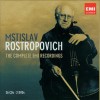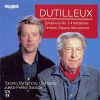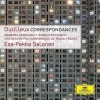Composers
Henri Dutilleux (born 22 January 1916 in Angers, Maine-et-Loire) is one of the most important French composers of the second half of the 20th century, producing work in the tradition of Maurice Ravel, Claude Debussy, and Albert Roussel, but in a style distinctly his own. Although his output is relatively small, its quality and originality have won international acclaim.
As a young man, Dutilleux studied harmony, counterpoint and piano with Victor Gallois at the Douai Conservatory before leaving for Paris. There from 1933 to 1938 he attended the classes of Jean and Noël Gallon (harmony and counterpoint), Henri Büsser (composition) and Maurice Emmanuel (history of music) at the Paris Conservatoire.
Dutilleux won the Prix de Rome in 1938 for his cantata L'anneau du roi but did not complete the entire residency in Rome due to the outbreak of World War II. He worked for a year as a medical orderly in the army and then came back to Paris in 1940 where he worked as a pianist, arranger and music teacher and in 1942 conducted the choir of the Paris Opera.
Dutilleux worked as Head of Music Production for French Radio from 1945 to 1963. He served as Professor of Composition at the École Normale de Musique de Paris from 1961 to 1970. He was appointed to the staff of the Conservatoire National Supérieur de Musique in 1970 and was composer in residence at Tanglewood in 1995 and 1998. His students include French composers Gérard Grisey and Francis Bayer, Canadian composers Alain Gagnon and Jacques Hétu, British composers Kenneth Hesketh and Andrew McBirnie, and American composers Derek Bermel and David S. Sampson. Invited by Walter Fink, he was the 16th composer featured in the annual Komponistenporträt of the Rheingau Musik Festival in 2006.
Dutilleux's music extends the legacies of earlier French composers such as Debussy and Ravel but is also clearly influenced by Béla Bartók and Igor Stravinsky. His attitude towards Serialism is more ambiguous. While he has always paid attention to the developments of contemporary music and has incorporated some serialist techniques into his own compositions, he has also criticized the more radical and intolerant aspects of the movement ("What I reject is the dogma and the authoritarianism which manifested themselves in that period"). As an independent composer, Dutilleux has always refused to be associated with any school. Rather, his works merge the traditions of earlier composers and post-World War II innovations and translate them into his own idiosyncratic style. His music also contains echoes of jazz as can be heard in the double bass introduction to his First Symphony and his frequent use of syncopated rhythms.
Some of Dutilleux's trademarks include very refined orchestral textures; complex rhythms; a preference for atonality and modality over tonality; the use of pedal points that serve as atonal pitch centers; and "reverse variation," by which a theme is not exposed immediately but rather revealed gradually, appearing in its complete form only after a few partial, tentative expositions. His music also displays a very strong sense of structure and symmetry. This is particularly obvious from an "external" point of view i.e., the overall organisation of the different movements or the spatial distribution of the various instruments, but is also apparent in the music itself (themes, harmonies and rhythms mirroring, complementing or opposing each other). "A passage may be conceived as a symmetrical shape of notes on paper and only later given musical substance. He loves symmetrical musical figures such as palindromes or fan-shaped phrases..."
Dutilleux's music has often been influenced by art and literature, such as the works of Vincent van Gogh, Charles Baudelaire, and Marcel Proust. It also shows a concern for the concepts of time and memory, both in its use of quotations (notably from Béla Bartók, Benjamin Britten and Jehan Alain), and in short interludes that recall material used in earlier movements and/or introduce ideas that will be fully developed later.
A perfectionist with a strong sense of artistic integrity, he has allowed only a small number of his works to be published, and what he does publish he often revises and adjusts many times subsequently.
Dutilleux numbered as Op. 1 his Piano Sonata (1946–1948), written for pianist Geneviève Joy, whom he had married in 1946. He has renounced most of the works he composed before it because he did not believe them to be representative of his mature standards, considering many of them to be too derivative to have merit.
After the Piano Sonata, Dutilleux started working on his First Symphony (1951). It consists of four monothematic movements and has a perfectly symmetrical structure: music slowly emerges from silence (1st movement— a passacaglia) and builds towards a fast climax (2nd—a scherzo and moto perpetuo), keeps its momentum (3rd—"a continuous melodic line the never goes back on itself"), and finally slowly fades out (4th—a theme and variations).
In 1953, Dutilleux wrote the music for the ballet Le loup.
In his Second Symphony, titled Le double (1959), the orchestra is divided into two groups: a small one at the front with instruments taken from the various sections (brass, woodwind, strings and percussion) and a bigger one at the back consisting of the rest of the orchestra. Although this brings to mind the Baroque concerto grosso, the approach is different: in this piece, the smaller ensemble acts as a mirror or ghost of the bigger one, sometimes playing similar or complementary lines, sometimes contrasting ones.
His next work, Métaboles (for orchestra, 1965) explores the idea of metamorphosis, how a series of subtle and gradual changes can radically transform a structure. A different section of the orchestra dominates each of the first four movements before the fifth brings them all together for the finale. As a result, it can be considered as a concerto for orchestra. It quickly achieved celebrity and, following its première by George Szell and the Cleveland Orchestra, was performed in several North American cities, then in France. Métaboles is now one of his most often performed works.
In the mid-sixties, Dutilleux met Mstislav Rostropovich, who commissioned him to write a cello concerto. Rostropovich premièred the work, titled Tout un monde lointain, in 1970. It is one of the most important additions to the cello repertoire of the 20th century and is considered one of the composer's major achievements. In five movements, Tout un monde lointain is a nocturnal, mysterious work with a delicate orchestration and an eerily beautiful, yet highly virtuosic solo part. While most of the concerto is introspective and meditative, it also has occasional outbursts of violence and a frantic build-up to the ambiguous, suspended finale.
After the cello concerto, Dutilleux turned to chamber music for the first time in more than 20 years and published various works for piano (3 Préludes, Figures de résonances) and 3 strophes sur le nom de Sacher (1976–1982) for solo cello. The latter work was originally composed on the occasion of Sacher's 70th birthday in 1976, on a request by Russian cellist Mstislav Rostropovich to write compositions for cello solo using his name spelt out in musical notes as the theme (eS, A, C, H, E, Re). The compositions were partially presented in Zurich on 2 May 1976. The whole project will be (for the first time in complete performance) performed by Czech cellist František Brikcius in May 2011 in Prague.[citation needed]He also wrote the string quartet Ainsi la Nuit (1976). Each of its movements highlights various special effects (pizzicato, glissandi, harmonics, extreme registers, contrasting dynamics…) resulting in a difficult but fascinating work.
He then returned to orchestral works in 1978 with Timbres, espace, mouvement ou la nuit etoilée, inspired by Vincent Van Gogh's The Starry Night. In this composition, Dutilleux attempted to translate into musical terms the opposition between emptiness and movement conveyed by the painting. The work employs a string section of only lower-register instruments: cellos and double basses, no violins or violas.
In 1985, Isaac Stern premiered L'arbre des songes, a violin concerto that he had commissioned Dutilleux to write. Like its cello counterpart, it is an important addition to the instrument's 20th century repertoire. However, it is completely atonal, more in the mold of Arnold Schoenberg or Alben Berg, than of Ravel, Debussy or Roussel.
Dutilleux later wrote Mystère de l'instant (for cymbalum, string orchestra and percussion, 1989), Les Citations (for oboe, harpsichord, double bass and percussion, 1991), The Shadows of Time (for orchestra and children voices, 1997), Slava's Fanfare (for Rostropovich's 70th birthday, 1997) and Sur le même accord (for violin and orchestra, 2002 - dedicated to Anne-Sophie Mutter).
In 2003, he completed Correspondances, a song-cycle for soprano and orchestra inspired by poems and letters by Prithwindra Mukherjee, Rainer Maria Rilke, Aleksandr Solzhenitsyn and Vincent van Gogh. This work has received a very enthusiastic reception and has been programmed several times since its première.
His latest work is another song-cycle entitled Le temps l'horloge, written for American soprano Renée Fleming. It consists of four pieces and an instrumental interlude on two poems by Jean Tardieu, one by Robert Desnos and one by Charles Baudelaire. The first three songs were premièred at the Saito Kinen Festival Matsumoto, Japan in September 2007. The American première of this partial version took place in November 2007 with the Boston Symphony Orchestra. The complete work was unveiled on May 7, 2009 at the Théâtre des Champs-Elysées in Paris where the 16-minutes song-cycle was immediately encored.
Most recently, Dutilleux has added a third movement to his chamber work Les Citations. The expanded version was premiered at the Festival d’Auvers-sur-Oise on 24 June 2010. In 2011, Pascal Gallois transcribed, with Dutilleux's approval, his Deux sonnets de Jean Cassou for bassoon and piano (originally for baritone and piano).
As for future projects, Dutilleux has expressed the wish to write more chamber music, notably a second string quartet, a genre he feels he has neglected.
Recently Added
Biography
Henri Dutilleux (born 22 January 1916 in Angers, Maine-et-Loire) is one of the most important French composers of the second half of the 20th century, producing work in the tradition of Maurice Ravel, Claude Debussy, and Albert Roussel, but in a style distinctly his own. Although his output is relatively small, its quality and originality have won international acclaim.
As a young man, Dutilleux studied harmony, counterpoint and piano with Victor Gallois at the Douai Conservatory before leaving for Paris. There from 1933 to 1938 he attended the classes of Jean and Noël Gallon (harmony and counterpoint), Henri Büsser (composition) and Maurice Emmanuel (history of music) at the Paris Conservatoire.
Dutilleux won the Prix de Rome in 1938 for his cantata L'anneau du roi but did not complete the entire residency in Rome due to the outbreak of World War II. He worked for a year as a medical orderly in the army and then came back to Paris in 1940 where he worked as a pianist, arranger and music teacher and in 1942 conducted the choir of the Paris Opera.
Dutilleux worked as Head of Music Production for French Radio from 1945 to 1963. He served as Professor of Composition at the École Normale de Musique de Paris from 1961 to 1970. He was appointed to the staff of the Conservatoire National Supérieur de Musique in 1970 and was composer in residence at Tanglewood in 1995 and 1998. His students include French composers Gérard Grisey and Francis Bayer, Canadian composers Alain Gagnon and Jacques Hétu, British composers Kenneth Hesketh and Andrew McBirnie, and American composers Derek Bermel and David S. Sampson. Invited by Walter Fink, he was the 16th composer featured in the annual Komponistenporträt of the Rheingau Musik Festival in 2006.
Dutilleux's music extends the legacies of earlier French composers such as Debussy and Ravel but is also clearly influenced by Béla Bartók and Igor Stravinsky. His attitude towards Serialism is more ambiguous. While he has always paid attention to the developments of contemporary music and has incorporated some serialist techniques into his own compositions, he has also criticized the more radical and intolerant aspects of the movement ("What I reject is the dogma and the authoritarianism which manifested themselves in that period"). As an independent composer, Dutilleux has always refused to be associated with any school. Rather, his works merge the traditions of earlier composers and post-World War II innovations and translate them into his own idiosyncratic style. His music also contains echoes of jazz as can be heard in the double bass introduction to his First Symphony and his frequent use of syncopated rhythms.
Some of Dutilleux's trademarks include very refined orchestral textures; complex rhythms; a preference for atonality and modality over tonality; the use of pedal points that serve as atonal pitch centers; and "reverse variation," by which a theme is not exposed immediately but rather revealed gradually, appearing in its complete form only after a few partial, tentative expositions. His music also displays a very strong sense of structure and symmetry. This is particularly obvious from an "external" point of view i.e., the overall organisation of the different movements or the spatial distribution of the various instruments, but is also apparent in the music itself (themes, harmonies and rhythms mirroring, complementing or opposing each other). "A passage may be conceived as a symmetrical shape of notes on paper and only later given musical substance. He loves symmetrical musical figures such as palindromes or fan-shaped phrases..."
Dutilleux's music has often been influenced by art and literature, such as the works of Vincent van Gogh, Charles Baudelaire, and Marcel Proust. It also shows a concern for the concepts of time and memory, both in its use of quotations (notably from Béla Bartók, Benjamin Britten and Jehan Alain), and in short interludes that recall material used in earlier movements and/or introduce ideas that will be fully developed later.
A perfectionist with a strong sense of artistic integrity, he has allowed only a small number of his works to be published, and what he does publish he often revises and adjusts many times subsequently.
Dutilleux numbered as Op. 1 his Piano Sonata (1946–1948), written for pianist Geneviève Joy, whom he had married in 1946. He has renounced most of the works he composed before it because he did not believe them to be representative of his mature standards, considering many of them to be too derivative to have merit.
After the Piano Sonata, Dutilleux started working on his First Symphony (1951). It consists of four monothematic movements and has a perfectly symmetrical structure: music slowly emerges from silence (1st movement— a passacaglia) and builds towards a fast climax (2nd—a scherzo and moto perpetuo), keeps its momentum (3rd—"a continuous melodic line the never goes back on itself"), and finally slowly fades out (4th—a theme and variations).
In 1953, Dutilleux wrote the music for the ballet Le loup.
In his Second Symphony, titled Le double (1959), the orchestra is divided into two groups: a small one at the front with instruments taken from the various sections (brass, woodwind, strings and percussion) and a bigger one at the back consisting of the rest of the orchestra. Although this brings to mind the Baroque concerto grosso, the approach is different: in this piece, the smaller ensemble acts as a mirror or ghost of the bigger one, sometimes playing similar or complementary lines, sometimes contrasting ones.
His next work, Métaboles (for orchestra, 1965) explores the idea of metamorphosis, how a series of subtle and gradual changes can radically transform a structure. A different section of the orchestra dominates each of the first four movements before the fifth brings them all together for the finale. As a result, it can be considered as a concerto for orchestra. It quickly achieved celebrity and, following its première by George Szell and the Cleveland Orchestra, was performed in several North American cities, then in France. Métaboles is now one of his most often performed works.
In the mid-sixties, Dutilleux met Mstislav Rostropovich, who commissioned him to write a cello concerto. Rostropovich premièred the work, titled Tout un monde lointain, in 1970. It is one of the most important additions to the cello repertoire of the 20th century and is considered one of the composer's major achievements. In five movements, Tout un monde lointain is a nocturnal, mysterious work with a delicate orchestration and an eerily beautiful, yet highly virtuosic solo part. While most of the concerto is introspective and meditative, it also has occasional outbursts of violence and a frantic build-up to the ambiguous, suspended finale.
After the cello concerto, Dutilleux turned to chamber music for the first time in more than 20 years and published various works for piano (3 Préludes, Figures de résonances) and 3 strophes sur le nom de Sacher (1976–1982) for solo cello. The latter work was originally composed on the occasion of Sacher's 70th birthday in 1976, on a request by Russian cellist Mstislav Rostropovich to write compositions for cello solo using his name spelt out in musical notes as the theme (eS, A, C, H, E, Re). The compositions were partially presented in Zurich on 2 May 1976. The whole project will be (for the first time in complete performance) performed by Czech cellist František Brikcius in May 2011 in Prague.[citation needed]He also wrote the string quartet Ainsi la Nuit (1976). Each of its movements highlights various special effects (pizzicato, glissandi, harmonics, extreme registers, contrasting dynamics…) resulting in a difficult but fascinating work.
He then returned to orchestral works in 1978 with Timbres, espace, mouvement ou la nuit etoilée, inspired by Vincent Van Gogh's The Starry Night. In this composition, Dutilleux attempted to translate into musical terms the opposition between emptiness and movement conveyed by the painting. The work employs a string section of only lower-register instruments: cellos and double basses, no violins or violas.
In 1985, Isaac Stern premiered L'arbre des songes, a violin concerto that he had commissioned Dutilleux to write. Like its cello counterpart, it is an important addition to the instrument's 20th century repertoire. However, it is completely atonal, more in the mold of Arnold Schoenberg or Alben Berg, than of Ravel, Debussy or Roussel.
Dutilleux later wrote Mystère de l'instant (for cymbalum, string orchestra and percussion, 1989), Les Citations (for oboe, harpsichord, double bass and percussion, 1991), The Shadows of Time (for orchestra and children voices, 1997), Slava's Fanfare (for Rostropovich's 70th birthday, 1997) and Sur le même accord (for violin and orchestra, 2002 - dedicated to Anne-Sophie Mutter).
In 2003, he completed Correspondances, a song-cycle for soprano and orchestra inspired by poems and letters by Prithwindra Mukherjee, Rainer Maria Rilke, Aleksandr Solzhenitsyn and Vincent van Gogh. This work has received a very enthusiastic reception and has been programmed several times since its première.
His latest work is another song-cycle entitled Le temps l'horloge, written for American soprano Renée Fleming. It consists of four pieces and an instrumental interlude on two poems by Jean Tardieu, one by Robert Desnos and one by Charles Baudelaire. The first three songs were premièred at the Saito Kinen Festival Matsumoto, Japan in September 2007. The American première of this partial version took place in November 2007 with the Boston Symphony Orchestra. The complete work was unveiled on May 7, 2009 at the Théâtre des Champs-Elysées in Paris where the 16-minutes song-cycle was immediately encored.
Most recently, Dutilleux has added a third movement to his chamber work Les Citations. The expanded version was premiered at the Festival d’Auvers-sur-Oise on 24 June 2010. In 2011, Pascal Gallois transcribed, with Dutilleux's approval, his Deux sonnets de Jean Cassou for bassoon and piano (originally for baritone and piano).
As for future projects, Dutilleux has expressed the wish to write more chamber music, notably a second string quartet, a genre he feels he has neglected.



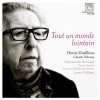
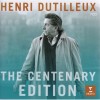
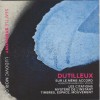
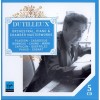
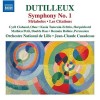
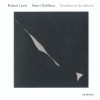
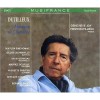
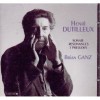
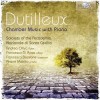
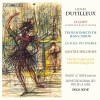


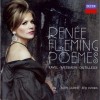
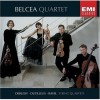
![Anthology of the Royal Concertgebouw Orchestra: Live the Radio Recordings 1960-1970 [CD9]](http://static.classicalm.com/repository/disk-cover/small/3446-img1395223793797033.jpg)
